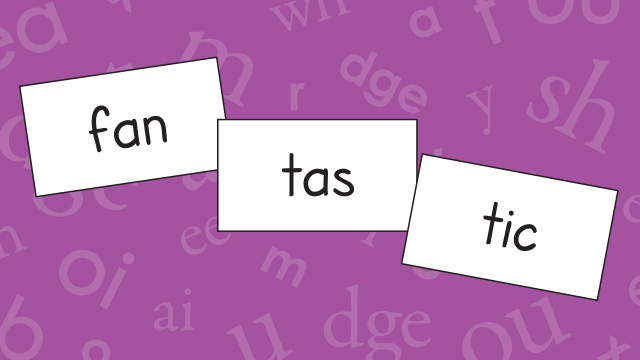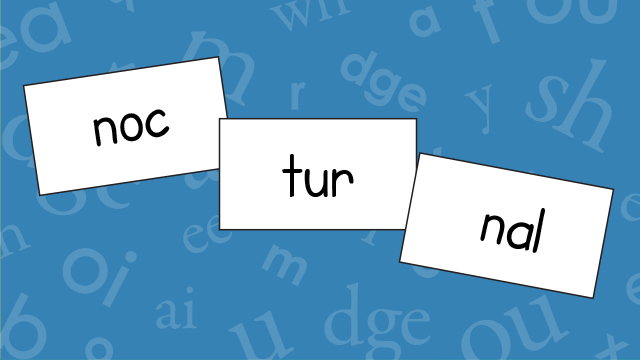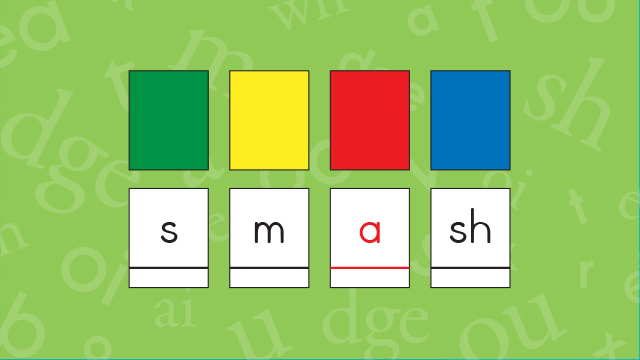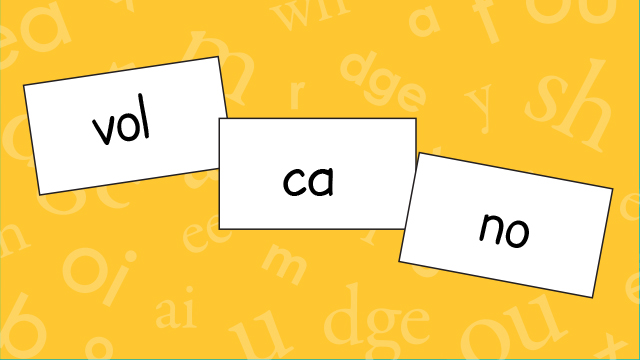What Is the Science of Reading?
The science of reading is a body of research that incorporates insights and research from disciplines that include developmental psychology, educational psychology, cognitive science, and cognitive neuroscience. The science of reading has been documented around the world, in all languages and cultures, in studies that cost hundreds of millions of dollars. In short, the science of reading has demonstrated the methods that best help children learn to read, from the earliest steps in spoken language to being able to successfully decode unfamiliar words.
What Does the Science of Reading Say About Phonics Instruction?
One of the key elements in successful reading instruction identified in reading research is the role that phonics instruction plays in learning to read. The scientific consensus is that teaching phonics systematically, explicitly, and cumulatively is key to successful reading instruction.
Missing the Cue
Some schools still use methods of reading instruction based on “cueing” instead of, or alongside, phonics instruction. Does that term seem unfamiliar?
“Teachers may not know the term "three cueing," but they're probably familiar with "MSV." M stands for using meaning to figure out what a word is, S for using sentence structure, and V for using visual information (i.e., the letters in the words).” (APM Reports, 2019)
However, as the science of reading has developed further, “three cueing,” which also became known by the term “whole language,” was superseded. What scientific research has shown is that skilled readers can read words without relying on context, or the visual cues that were the basis for the original hypothesis about cues.
“It turns out that the ability to read words in isolation quickly and accurately is the hallmark of being a skilled reader. This is now one of the most consistent and well-replicated findings in all of the reading research.”(APM Reports, 2019)
Five Key Elements of Scientific Reading Instruction?
The National Reading Panel (NRP) report in 2000 identified these five elements that are key to reading success:
- Comprehension
- Fluency
- Vocabulary
- Phonics
- Phonemic Awareness
Let’s take a look at both phonemic awareness and phonics in more depth.
Building Phonemic Awareness
Efficient foundational literacy skills begin with the building blocks of words – phonemes.
A key step in developing fluent reading skills is helping children with phonemic awareness – the idea that phonemes (sounds) correspond to graphemes (letter sequences that signify sounds).
The goal in Grades K-1 is to teach students phonemic awareness so they can independently start to decode unfamiliar words using the automatic skills they have developed through the application of direct phonics instruction.
By the end of 2nd grade, students will recall 1,000-7,500 words. It's not possible to have students memorize every word or every pattern of phonemes or graphemes. Teaching foundational literacy skills in a specific way gives students the skills they need to teach themselves. This is commonly called the “Self-Teaching” model.
Three Elements of Science-Based Phonics Instruction
Based on science, the three elements you need for effective phonics instruction are:
- A hands-on approach
- Moving from presentation to practice
- Showing the direct application to reading and spelling
These three practices support effective decoding, and decoding is among the most fundamental skills for students to master when learning to read.
The key to decoding is to help students develop cognitive automaticity. This means that students know a word on sight without having to sound it out. This is commonly referred to when discussing “sight words.”
Did you know? First graders are expected to have a sight word vocabulary of over 2000 words!
The sight word memory is called the orthographic lexicon. Students develop their orthographic lexicon by successfully decoding words. When they decode words leveraging phoneme-grapheme relationships, it’s called orthographic mapping. Orthographic mapping is how individuals anchor words into their sight word memory (orthographic lexicon) and store them for accurate & effortless recognition. But, in a system that uses “whole language” or that uses cueing alongside phonics, students may not develop the automaticity needed to step beyond reading words to developing comprehension.
"They [students]sample from the letters because they're not good at sounding them out ... The three-cueing system is the way poor readers read.” - David Kilpatrick, psychology professor at SUNY Cortland
The other two key components of comprehension, vocabulary, and fluency can be developed through reading aloud. Reading aloud is a way to build language comprehension skills as well as decoding skills at the same time. These two skills work together to produce reading comprehension.
As Emily Hanford noted at AMP Reports, "This comes straight from the scientific research, which shows that reading comprehension is the product of two things. First, a child needs to be able to sound out a word. Second, the child needs to know the meaning of the word she just sounded out. So, in a first-grade classroom that's following the research, you will see explicit phonics instruction and also lessons that build oral vocabulary and background knowledge. And you will see kids practicing what they've been taught."

Attend a complimentary Science of Reading Virtual Workshop for even more great information on how you can use the science of reading to help children in your classroom.
Learning to Speak Is Natural, Reading Is Not
What does the science of reading tell us about the developmental order of skills needed to become a successful reader?
When we learn words, we learn spoken language first. We learn the sound structure of words. We can isolate phonemes, and in classroom instruction, isolating the beginning sound of words is a way we accomplish this. Often, using the first sound in students' names help this process. Focusing on sounds is step one of systematic, explicit instruction … however, unlike “balanced literacy” or other methods derived from “cueing”, sound isolation is just the first step toward having students decode ALL the sounds in a word, with no guesswork, as it builds their phonemic awareness.
Building the Orthographic Lexicon
Earlier, we learned that building cognitive automaticity is needed for children to master phonics. As students successfully decode words, they build this lexicon of known words that they automatically decode.
Stories and games are a way to introduce students to phonemes systematically. Reinforcement, repetition, and modeling build the cognitive automaticity needed for phonemic awareness. Phonemic awareness is a set of skills that can be explicitly taught, modeled, and practiced. Phoneme isolation is the very first step in the continuum of actions that end with complex blending activities.
Ready to dive into some classroom strategies for phoneme isolation? Attend a complimentary Science of Reading Virtual Workshop>>
As you move through more advanced classroom lessons, you’ll find that using multisensory instruction methods will help children master more complex operations with phonemes including breaking words down into their individual phonemes. Phoneme substitution is the most advanced phonemic awareness skill. By teaching skills such as: explicitly and systematically, students develop the ability to do phoneme substitution, which is the key ability in becoming an independent reader. Through this instruction process, students will be able to teach themselves new words as they read. The alphabetic principle is the idea that words are made of sounds, and that our letters represent those sounds. Interested in seeing examples of how our phonics instruction uses these methods in fun, engaging classroom activities? Attend a complimentary Science of Reading Virtual Workshop>> Phonics is the knowledge of the regular relationships found in English. Phonics is the practical application of the alphabetic principle. Phonics knowledge allows students to read words that they have not encountered before. Phonics education should build automaticity in matching graphemes to phonemes through systematic, explicit instruction. A Closed syllable is a syllable with one vowel, followed by one or more consonants. The vowel in a closed syllable usually spells a short vowel sound. Closed syllables are 53% of all English syllables. You may have seen the letter tiles app or the physical tiles that are used in the classroom as part of our program. We use the letter tiles to help students match the sounds to tiles so that they understand that words are composed of sounds, and those sounds correspond to letters. The goal is to teach students a method of decoding that they can use for new or unfamiliar words, so they don’t fall back on the “3 cues” used by struggling readers, readers who have not been taught phonemic awareness, and are instead of guessing what the word might be.Mastering the Alphabetic Principle
How Does the Alphabetic Principle Relate to the Science of Reading?
The alphabetic principle is a key concept for developing reading skills. We believe in moving from speech to sound, from phonemes to graphemes. Students may not have knowledge of the alphabetic principle coming into K-1 and learning the alphabetic principle by moving from speech to print, prevents errors, guessing, and other issues with decoding.
Through explicit, structured activities, students develop their ability to use the alphabetic principle to match phonemes to graphemes.How Does Phonics Build on the Alphabetic Principle?
Example: Closed syllables
Check out Part 4 of our FREE webinar series on the science of reading for even more great information on how you can use the science of reading to help children in your classroom. Once students are comfortable with the alphabetic principle, they are ready to move on to multisyllabic words. That’s where our SyllaBoards™ helps students break multisyllabic words into their individual syllables. As we noted above, closed syllables are 53% of all syllables used in English. Students who can successfully decode these and other common syllable types use those skills to build their orthographic lexicons. As they read new words, they are not just reading but can also focus on reading to comprehend, an important goal outlined in state and federal standards. Watch some real classroom examples of how SyllaBoards™ can assist students in developing the skills they need to increase reading fluency and to be able to read unfamiliar words in our Science of Reading On-demand Webinar series. Sight words are not necessarily high-frequency words. In fact, adults may recognize 30,000 to 70,000 words on sight. However, these words were not memorized through a process of explicit memorization training. Instead, as students become familiar with graphemes and then syllables as a way of decoding words, reading these “sight words” becomes automatic – not requiring conscious thought. High-Frequency Words Are Not the Only Sight Words You may be familiar with several different lists of high-frequency words that are referred to as sight words. These include the Dolch 220 list or the Fry Word List. However, sight words are much more than just high-frequency words, and, high-frequency words are often irregular. For example, the word “eight,” which has roots going back to Old English spelling, is irregular. Learning to decode common irregular words through a phonetic approach is more effective than rote memorization, or “blended literacy” approaches, where students can fall back on guesses or attempts at memorization. The phonetic approach to learning sight words is the essence of our Heart Word Magic. Heart Words teach students a phonetic way to master these tricky words. Research has shown that once students decode a word several times, it can anchor successfully in their sight word memory. Rote memorization of sight words doesn’t allow for sound-sight awareness, the phoneme-grapheme relationship that we cover at the start of our curriculum. Learn more about Heart Word Magic>> and read our Make Tricky Sight Words Sticky Blog>> Educators, attend a complimentary two-part Science of Reading Virtual Workshop, Each part is approximately three hours of content and focuses on the methods that have been found, through research, to give students a real learning advantage in decoding. This includes crucial information about what researchers suggest are the best practices for teaching the subskills that lead to strong decoding and fluent reading. Participants that successfully complete the webinar will receive a certificate of attendance for 6 contact hours and a bonus on-demand Part 3. Our workshop is fully focused on professional development, with no product presentations, and is taught by expert presenters who themselves have mastered the Science of Reading. You may also upgrade your Complimentary Seat - Price: $199 and includes up to $300 worth of materials with PAID registration: As a paid registrant you can select a Countdown, Blast, or HD Word starter kit which will be shipped directly to you after you complete Part 1 of the workshop. Your starter kit will include all the materials you will need to get started with one student: Click here to find a date and register now! Click the link below to see what your starter kit includes: References Collaborative Classroom, The Settled Science of Reading National Council on Teacher Quality, The Science of Teaching Reading ACSD, The Science of Reading Research Voyager Sopris, EdView360 Blog, Of ‘Hard Words’ and Straw Men: Let’s Understand What Reading Science is Really About AMP Reports, How a flawed idea is teaching millions of kids to be poor readers
Multisyllabic Words and the Science of Reading
Thinking About Sight Words
Heart Word Magic – The Science of Sight Words
The Science of Reading Virtual Workshops
What Is the Difference Between a Complimentary and PAID Seat?




